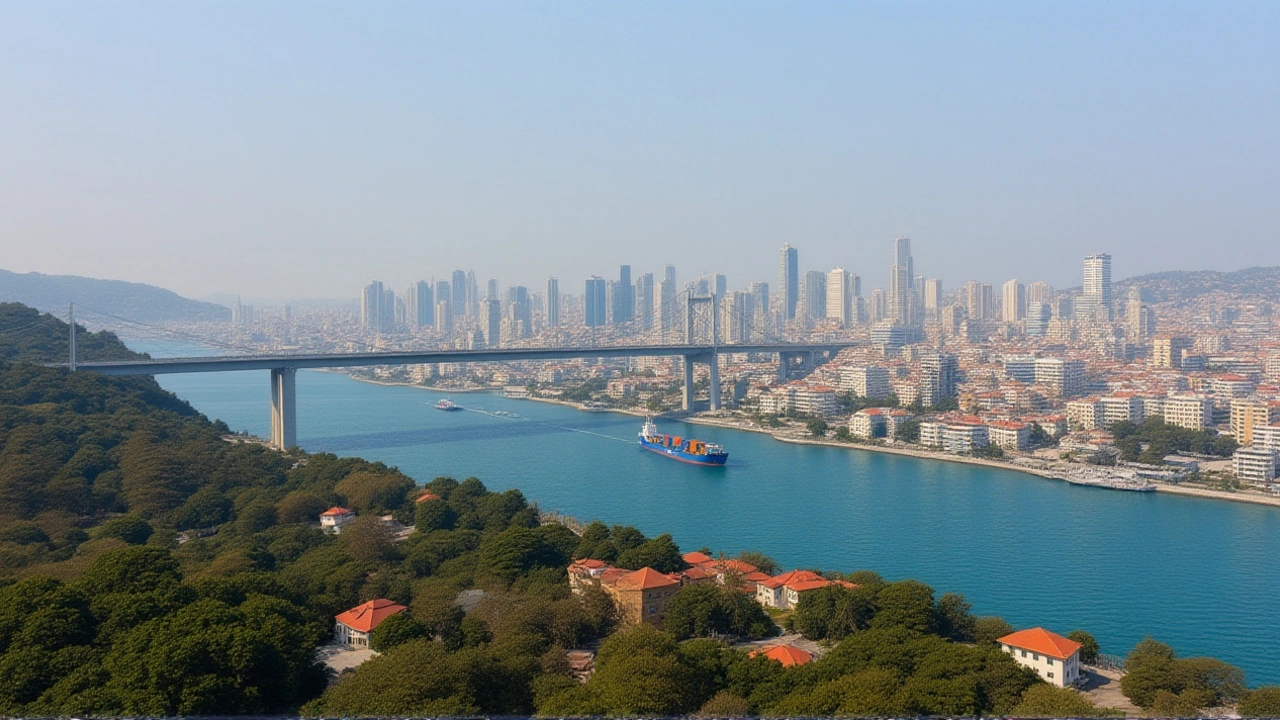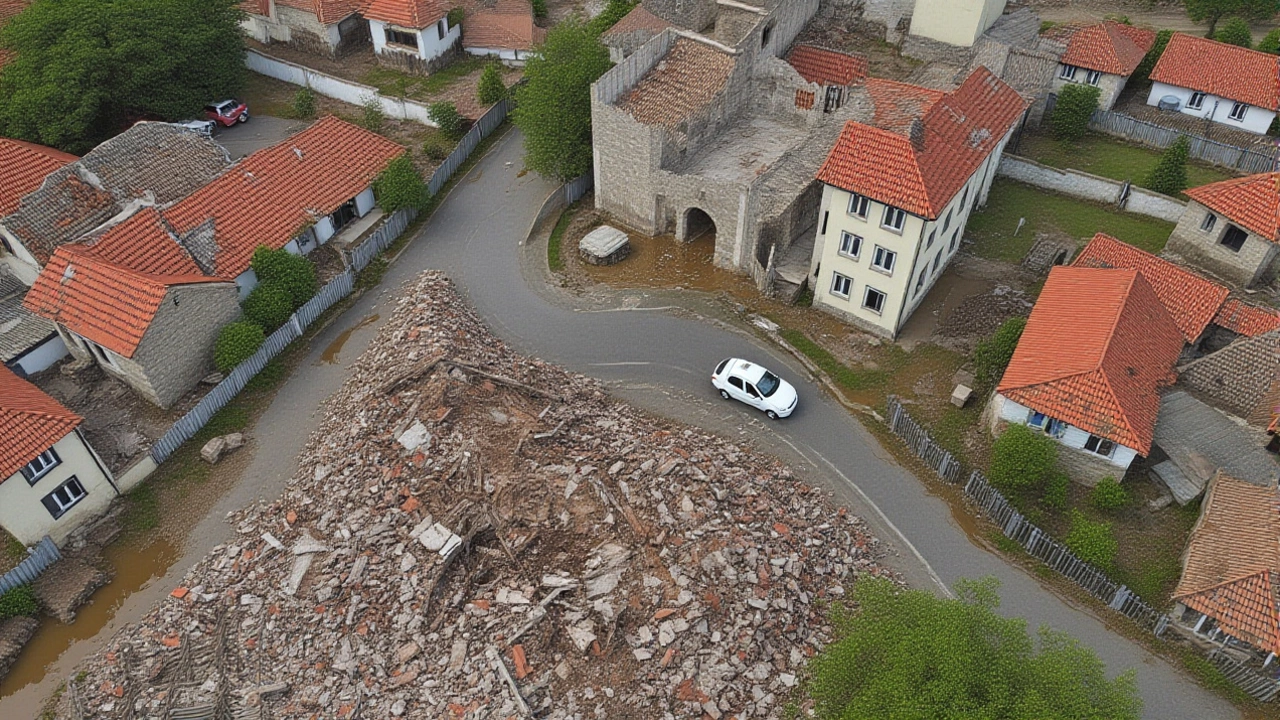
On August 10, 2025, a 6.1 magnitude earthquake ripped through western Turkey, killing one person and injuring 52 near the village of Alacaatli in Balıkesir Province. Two months later, on October 27, 2025, another Mw 6.0 quake struck the same region, injuring 68 more — not as a random accident, but as part of a relentless, growing pattern. Between these two major events, over 10,000 aftershocks rattled the ground, according to a GeoHazards study. And it’s not over. A swarm of tremors — including a 4.5, then a 3.9, then a 4.6 — hit Kütahya Province in late October, shifting the epicenter eastward. This isn’t just bad luck. It’s a fault swarm. And scientists are watching it like a ticking clock.
The Fault Beneath the Farm Fields
The culprit isn’t some mysterious underground force. It’s the Simav Fault, a 60-kilometer-long fracture in Earth’s crust running beneath southern Balıkesir. This fault is part of the Aegean Graben System, a vast network of stretching, slipping fractures that define western Turkey’s geology. Here, the Anatolian Plate is being squeezed westward by the Arabian and Eurasian plates, like a toothpaste tube being pressed from both ends. The result? The crust is pulling apart north-south, and the Simav Fault is one of the main release valves.After the August 10 quake, satellite data from the Sentinel-1 mission — analyzed using InSAR technology — showed the ground sinking in places by as much as 15 centimeters. Blue areas on the map marked subsidence directly above the fault plane. Red zones showed uplift. It wasn’t a single crack opening. It was the entire system exhaling.
From Balıkesir to Kütahya: The Swarm Moves
What makes this sequence terrifying isn’t the size of the quakes — though 6.0 and 6.1 are no joke — but their pattern. The August quake triggered a cascade. Then, on October 24, 2025, a tiny 0.9-magnitude tremor hit just 17 kilometers from Simav in Kütahya. Three days later, three more quakes struck in under four hours: 4.5, then 3.9, then 4.6. All within the same fault corridor.Dr. Bektaş, a seismologist cited by Paturkey.com, called it a regional “earthquake storm.” And he’s not exaggerating. The Uşak–Simav–Kütahya fault corridor has produced major clusters before: 1969, 1970, 2011, and now 2025. Each time, the seismic energy doesn’t explode in one giant rupture. It leaks out in waves — a series of moderate quakes that, while damaging, may actually prevent a catastrophe by releasing stress gradually.
The October 27 Mw 6.0 event was particularly telling. Its focal mechanism showed an “oblique normal” slip — meaning the fault didn’t just slide sideways like a strike-slip fault (like California’s San Andreas). It also dropped slightly downward, confirming the region is still stretching. This quake hit right on the eastern edge of the August aftershock zone. It’s as if the energy was pushed, like water in a bathtub, toward Kütahya.
Who’s Watching — And Who’s Afraid?
AFAD, Turkey’s Disaster and Emergency Management Agency, confirmed the death toll and injury numbers. But their real job now is monitoring. Their teams are still inspecting buildings in Kütahya and Balıkesir, checking for hidden cracks, weakened foundations, and unreported damage. Governor Musa Işın of Kütahya appeared on national TV, calm but urgent: “No significant damage or casualties have been reported,” he said, “but the state of alert remains in place.”Residents aren’t panicking — not yet. But they’re nervous. In Simav, a schoolteacher named Ayşe Demir told a local reporter, “We sleep with our shoes on now. The ground doesn’t feel safe anymore.”
Experts agree: the swarm is nature’s way of redistributing stress. But that doesn’t mean it’s done. The Simav Fault and its neighbor, the Gediz Fault, define the Uşak Block — a tectonic puzzle piece that’s been restless for over half a century. If stress continues migrating eastward, another moderate quake is likely in the coming weeks. A larger one? Not impossible.

Why This Matters Beyond Turkey
Western Turkey is one of the most seismically active places on Earth. But this swarm is special. Most fault swarms are short-lived. This one has lasted over 100 days and is shifting direction. That’s rare. It suggests the fault system is more interconnected than previously modeled.Scientists are now using this event to refine earthquake prediction models. If a swarm can be tracked in real time — if its movement can be mapped from space and correlated with underground pressure changes — we might one day predict where the next tremor will strike, not just when.
For now, the message from Kandilli Seismological Observatory and AFAD is simple: Prepare. Don’t panic. Check your building’s structural integrity. Know your emergency plan. Because in this part of the world, the ground doesn’t just shake — it remembers.
Frequently Asked Questions
What’s the difference between an earthquake swarm and a mainshock-aftershock sequence?
A mainshock-aftershock sequence has one dominant quake followed by smaller ones that gradually decrease. A swarm has multiple moderate quakes of similar size, with no single dominant event. The Simav events are a swarm because the August 10 and October 27 quakes were nearly equal in magnitude, and dozens of mid-sized tremors occurred in between — suggesting stress release across multiple fault segments, not a single rupture.
Why is Kütahya Province suddenly experiencing more quakes?
The seismic stress from the August 10 Balıkesir quake didn’t dissipate — it migrated eastward along the Uşak–Simav–Kütahya corridor. The fault system is interconnected, and energy transfers like a wave through a chain of springs. Kütahya lies directly on this stress pathway, making it the new focal point. Satellite data confirms ground deformation patterns shifting toward this area since October.
Could this lead to a major earthquake like the 1999 İzmit quake?
Unlikely, but not impossible. The 1999 İzmit quake (M7.6) occurred on a different fault system — the North Anatolian Fault — over 300 kilometers north. The Simav Fault is a normal fault system, not a strike-slip like İzmit’s, and produces smaller, more frequent quakes. However, if stress accumulates across multiple faults simultaneously, a larger event could occur. Scientists say the current swarm is reducing that risk, not increasing it.
How are satellite images helping scientists track this?
The Sentinel-1 satellites use InSAR technology to detect millimeter-scale ground movements. By comparing images taken before and after the August 10 quake, researchers mapped subsidence (blue) and uplift (red) across 100 square kilometers. This revealed the exact geometry of the Simav Fault’s slip — confirming it’s a normal fault with a 12-kilometer depth. These maps help predict where stress is building next.
What should residents do right now?
Inspect buildings for new cracks, especially around foundations and load-bearing walls. Secure heavy furniture and water heaters. Keep an emergency kit with water, flashlight, and medications. Know your building’s evacuation route. Avoid rumors — rely only on updates from AFAD and the Kandilli Seismological Observatory. Panic increases risk more than tremors do.
Has this kind of seismic swarm happened before in Turkey?
Yes. In 2011, the Van region experienced a similar swarm before the M7.1 quake. But the Simav swarm is unusual because it’s shifting location over months, not clustering in one spot. This suggests a deeper, more complex interaction between the Simav and Gediz faults — something Turkish geologists are now modeling with new software to improve regional hazard forecasts.




